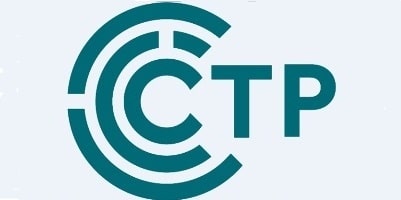How to carry out an effective customer experience audit of your contact centre – Rick Kirkham, Founder and Managing Director, Customer Touch Point discusses.
With plummeting performance, increasing customer frustration, and rising costs, many contact centre managers could be forgiven for despairing. Whilst these challenges are significant, they are solvable – and a customer experience audit is a crucial first step in understanding where and how to make changes.
In our latest article we talk about what a customer experience audit entails and the significant potential benefits, before exploring what’s needed to ensure your audit has a positive impact on your bottom line.
The contact centre is still the beating heart of most organisations’ customer experience
According to contact centre industry analyst Steve Morrell, CEO of ContactBabel, customers still value contact centres. ContactBabel’s UK CX Decision Makers’ Guide 2022-23 shows that customers still overwhelmingly prefer to use the phone, with 69.7% of all inbound interactions coming through this channel (63.5% live agent plus 6.2% self-service).
At the same time, call volumes and call times are increasing, and first contact resolution rates have been in constant decline since 2004. This leads to frustration for customers and increased contact centre costs.
Benefits of a thorough CX audit
At Customer Touch Point, we believe that if you want to reduce your contact centre costs, you have to do it in what might seem a counter-intuitive way. That means putting more effort and time – and yes, more investment – into your customer journey. Put simply, you cannot reduce contact costs unless you also improve customer service.
If you’re like other companies we meet who are struggling with rising contact centre costs, you will benefit from a customer experience audit.
A customer experience audit provides a wealth of benefits, including:
» Better understanding of customer needs, including accessibility needs. What do your customers visiting your website want to achieve, and how well are you helping them to achieve it?
» Uncovering the pain points and sticking points in your contact centre journey. Every customer journey has points along the way where customers leave because they can’t achieve what they want. Or they’ll complain. Or click around and search for your contact centre number to call you directly. Even very effective customer journeys have sticking points like this. Only a thorough audit will tell you where these are.
» Uncovering why customers call you and whether you can resolve their issues via self-serve. Some customers will always want to call you and no amount of encouragement or clever design will get them to self-serve. However, others call you because they’re frustrated. If you can uncover the common reasons why customers are calling you, you can work out which of those issues you can resolve with online self-serve. Often, people call in because certain information is missing from your site. Or that information might be there but it’s hard to find. Either way, you now know to add specific information – or to make it easier to navigate to – and that insight alone could save you thousands a day in calls that most customers no longer have to make.
» Updating FAQs with relevant information – and working out how to make FAQs easier to navigate to and use. Similar to the last point, many FAQ pages are useless – full of information that customers don’t need or want, but lacking information they do need or want. If you’ve never asked your customers what they would use an FAQs page for, an audit is a great way to find out what’s missing.
» Working out which digital channels to invest in based on customer needs. Not all self-serve channels are equal. Your customers might never use a chatbot or spend several minutes clicking around your website to find answers to simple questions. An audit will give you a far better idea of which channels are more likely to work for which of your customers and at what times.
» Understanding where you might need more training for contact centre staff. Contact centre staff can always benefit from more training, whether that’s around accessibility, knowing more information about a product, or knowing where all the useful information is on your website. Whatever their knowledge gaps, an audit is one of the best ways to uncover them.
» Resolving sticking points and providing better service. This is an obvious point but a powerful one. An audit doesn’t just show you where you have problems. It can also often give you extra information that helps to resolve those issues.
» Ultimately lower call volumes and lover call times, resulting in lower costs and happier customers. The better your self-serve journey, the fewer customers will call. However, remember that this will leave your contact centre to deal with the most complex queries and frustrated customers, which is where a better interactive voice response (IVR) system can help, as can better staff training.
What an audit is and what it involves
The Customer Touch Point CX audit rigorously analyses the components of your customer experience by taking on the role of your customer and experiencing your service from that perspective. The audit combines our unique Engage-to-Influence™ methodology with our experience of conducting audits at 500+ organisations to really get to the heart of what your customers want to achieve when they contact you.
We assess your CX by scoring the experience in six key categories. From there, you get a report that details the findings, including what’s working well, where you stand to improve, and practical suggestions on how to improve.
Key pitfalls to avoid
Of course, as with any complicated process that relies on experience and knowledge, there are certain pitfalls that companies can fall into when attempting a CX audit for the first time.
These include:
» Not using a proven and experienced third-party audit provider » Not adopting a customer viewpoint » Asking the wrong questions » Seeking to justify a specific investment in tech rather than focusing on customer needs » Over-reliance on customer satisfaction (CSAT) scores when they are of limited use for improving operations » Neglecting measuring customer effort, which can have a huge beneficial impact on improving customer journeys (click here for more information on why) » Not using the results to make improvements
The 3 most important things you must do when embarking on an audit if you want it to improve your CX
So, in summary, there are several things you need to keep in mind if you want your CX audit to improve your customer experience. However, the essentials can be boiled down to just three main points. As long as you stick to these, your CX audit will be useful.
#1 Always start any customer journey analysis by focusing on your customer needs. Not technology, or money saving, or even your agents (although they are also important). It is the customer’s journey you want to improve, so start with the customer. Sounds simple, even obvious, but you’d be amazed how many companies forget this.
#2 Measure customer effort. You might find measuring C-SAT useful, but customer effort is the KPI that will do the most to help you improve your business in the fastest possible time.
#3 Focus on the business case. A CX audit is about improving your service and your customer journeys, but the proof of this should be in the impact on costs and on increased revenues from happier customers. When putting together a case for a CX audit, think about the ROI you want to get from it.

You may also want to check out our customer experience FAQ page for some handy questions and answers on our CX audit and much more.
Customer Touch Point takes a ‘people-first, technology second’ approach to customer experience. Everything they do is based on using a pragmatic combination of human intelligence and emotional understanding to give CX leaders the right tools for the job, and the very best experience for their customers.
Using a unique methodology and a genuine passion for doing the right thing, Customer Touch Point has helped over 500 organisations in every major sector to uncover and solve their customer contact challenges.
Customers include Nestle Purina, Legal & General and Ikano Bank.
For additional information on Customer Touch Point view their Company Profile





